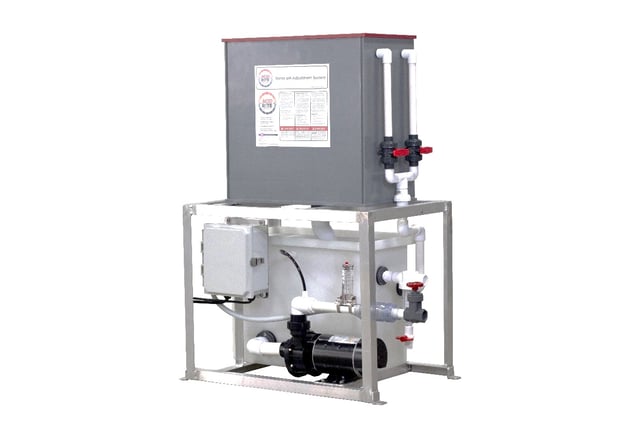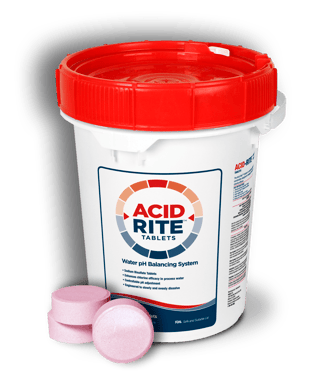
Operators of aquatic facilities know the importance that proper pH holds in maintaining clean, healthy water. Swimmer comfort depends on having pH in balance (7.2 to 7.8) not to mention that it is also a key component in chlorine’s effectiveness in attacking pathogens. Acid addition plays a pivotal role to keep pH in check. Yet, the forms in which it comes and the delivery systems used to administer it can be cumbersome and open to safety concerns. A new acid delivery system from Westlake Water Solutions, a Westlake Company, is out to change all that.
Acid Addition Meets Tablet Technology
Recognizing the drawbacks of using liquid, granular and gas acid feed systems, Westlake Water Solutions has commercialized a new tablet-based acid delivery system to balance pH in water. Marketed under the Acid-Rite® brand name, the system is simple, accurate and requires very little maintenance.
The Acid-Rite feeder is NSF/ANSI 50 listed. It consists of a patent pending feeder and three-inch-round sodium bisulfate erosion tablets. The tablets are packaged in re-sealable 45-pound pails. As an added safeguard against accidental mixing, Acid-Rite tablets are colored red to distinguish them from tablets that contain chlorine, which are typically colored white or blue.
 Historically, two widely used methods for introducing acid into water for pH adjustment are liquid muriatic acid and granular sodium bisulfate. More recently, CO2 (carbon dioxide) gas has also been utilized as a pH adjustment option. Though muriatic acid is the most common chemical used to balance water in commercial pools, it comes with drawbacks. Drums of the product weighing 500-plus pounds are difficult to maneuver and can spill. Additionally, feeder pumps require constant attention and repair.
Historically, two widely used methods for introducing acid into water for pH adjustment are liquid muriatic acid and granular sodium bisulfate. More recently, CO2 (carbon dioxide) gas has also been utilized as a pH adjustment option. Though muriatic acid is the most common chemical used to balance water in commercial pools, it comes with drawbacks. Drums of the product weighing 500-plus pounds are difficult to maneuver and can spill. Additionally, feeder pumps require constant attention and repair.
Granular sodium bisulfate is packaged in 50-pound bags which are awkward to handle and cut open—often leaving powder behind that can accumulate on, and attack pump room equipment such as controllers, pumps and motors. Like muriatic acid, feed pumps require frequent attention and repair.
CO2 is liquefied and shipped in cylinders that are heavy and difficult to handle. Gas regulators are required and pump rooms must be ventilated. The chemical itself will not help adjust alkalinity in a pool, meaning operators must pay extra attention to maintain proper alkalinity in the 80-120 ppm range. Additional acid will still have to be fed into the water to maintain alkalinity. CO2 systems are not recommended for use in high-alkalinity source water areas.
Westlake Water Solutions’ Acid-Rite system not only eliminates handling and safety issues associated with traditional methods of acid addition, but when combined with its Accu-Tab® Water Chlorination System, operators gain a more practical approach to maintaining overall water quality at aquatic facilities of any size.
Click here to learn more about the Acid-Rite system and its pool operator-friendly features.

